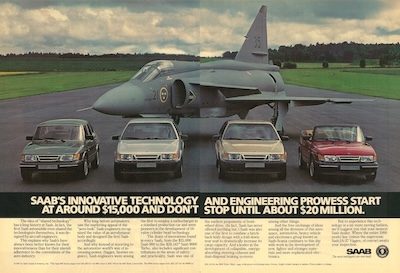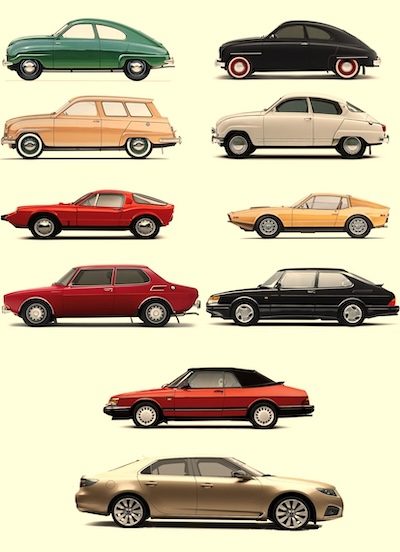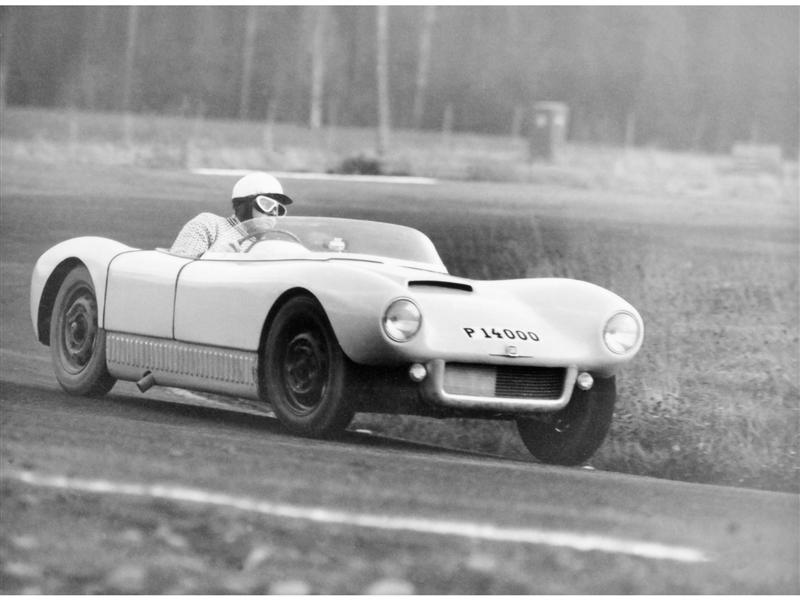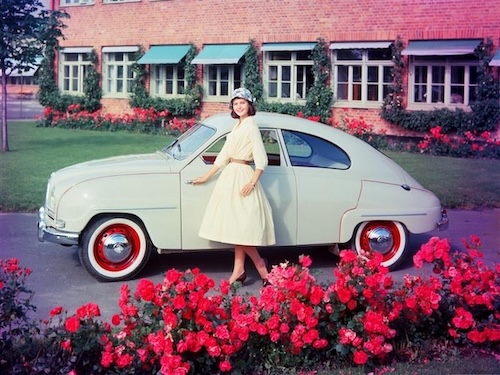By Greg Zyla —
Saab’s Auto Roots Date Back to the New York Auto Show
Q: Greg, I used to love the Saab cars and lost my way trying to uncover whatever became of the car here in 2025. The last I remember, the car was sold by General Motors. What’s up with the whereabouts of this great Swedish model, and when did they first come to America?
Thank you, David Lang, Danville, Pa.
A: David, thanks for the question, as the Saab cars were loved by many enthusiasts who appreciate the brand’s unique engineering and peculiar charm. Back in 2010, Saab was acquired from GM by a small Dutch company called Spyker Cars, known for its exotic sports cars and aviation-inspired design. The hope was that Spyker could breathe new life into Saab after its rocky years under General Motors (GM), which had owned the brand from 1989 as a 50% partner to full ownership in 2000.
But to truly understand Saab’s place in automotive history, we need to go back to its roots, not just in Sweden, but to a pivotal moment in New York City.
Saab’s story begins not with cars, but with airplanes. Founded in 1937 as Svenska Aeroplan Aktiebolaget (Swedish Aircraft Company), Saab was originally a defense contractor building aircraft for the Swedish Air Force. After World War II, the company sought to diversify and turned its engineering prowess toward automobiles.
In 1949, Saab introduced its first car, the Saab 92, a streamlined, aerodynamic vehicle that looked like nothing else on the road. It was powered by a modest two-cylinder, two-stroke engine, but its design and engineering were ahead of their time. The car’s body was shaped in a wind tunnel directly from its aviation build centers.

Saab has many times highlighted its airplane-building expertise in its automobile ads. This ad is from 1987 featuring the Saab lineup of cars and a huge Saab jet as the backdrop. (Saab)
In late 1955, Saab’s chairman Tryggve Holm traveled to the United States to meet with Ralph Millet, an ex-pilot and MIT-trained aeronautical engineer who represented Saab’s aircraft parts business in America. During their meeting, Holm floated the idea of importing Saab’s new car, the Saab 93, to the U.S. market.
Millet was skeptical. He doubted that American consumers, accustomed to big V8 engines and automatic transmissions, would embrace a small, two-stroke car that required oil to be mixed with gasoline, much like a lawnmower or motorcycle. He also admitted he knew little about the car business.
Still, Holm was undeterred. He insisted on testing the waters by showcasing Saab at the 1956 New York Auto Show. Millet agreed, and five cars were shipped over. At the show, Saab displayed two 93s and a rare Sonett Super Sport, a lightweight fiberglass sports car that hinted at Saab’s performance potential.
To everyone’s surprise, the eccentric little Swedish cars drew attention. Their aircraft- inspired design, front-wheel drive, and rugged simplicity appealed to a niche audience, especially in the Northeast, where winter driving was a challenge. By the end of the show, Millet found himself unexpectedly in the car business.
The Saab 93 Arrives
The 1956 Saab 93 was a refined evolution of the original 92. It featured a 33-horsepower, three-cylinder, two-stroke engine, front-wheel drive, and a four-speed column-mounted shifter, a rare “four on the tree” configuration. The car’s compact size, light weight, and excellent traction made it ideal for snowy climates.
One of Saab’s marketing points was the engine’s simplicity: just seven moving parts, the crankshaft, three pistons, and three connecting rods. This simplicity translated into reliability, especially in cold weather. Saab owners often boasted that their cars would start on the coldest mornings when others wouldn’t.

The original Saab 93, upper left, was a big hit at the 1956 New York Auto Show. Saab highlights its history in this advertisement. (Saab)
A cult following emerges
In 1957, Saab sold 1,410 units of the 93 in the U.S., accounting for about 14% of its total production. By 1959, that number had grown to 12,000 units, making the U.S. Saab’s largest export market. The brand quickly developed a loyal following among engineers, academics, and freethinkers, people who appreciated its unconventional approach.
If you happened to be a professor at Harvard or Yale and showed up in your new Saab 93 for classes, you were one cool professor.
Saab’s reputation was further bolstered by its success in rally racing. The company’s cars, driven by legends like Erik Carlsson, won numerous international rallies in the late 1950s and early 1960s. These victories proved that Saab’s quirky cars weren’t just practical; they were tough and competitive.
Innovation at the Core
Throughout its history, Saab was known for innovation. It was one of the first automakers to prioritize safety, introducing features like side-impact protection, headlamp washers, and heated seats long before they became industry standards. Saab also pioneered turbocharging in the 1970s, making it accessible to everyday drivers.
The company’s engineering-first philosophy sometimes clashed with the demands of mass-market appeal, especially under GM’s ownership. Still, Saab remained a symbol of individuality and Scandinavian ingenuity.

A sports car that attracted much attention was the 1955 to 1957 Saab Sonett, another example of Saab’s ability in performance and styling. (Saab)
The Spyker Era and Beyond
When GM sold Saab to Spyker Cars in 2010, there was renewed hope that the brand could return to its roots. Spyker, a boutique automaker with a flair for design, seemed like a good match. Unfortunately, financial struggles and supply chain issues plagued the transition. By 2011, Saab had filed for bankruptcy. As of 2025, Spyker Cars is not actively producing vehicles and is considered largely inactive. The company has experienced a turbulent history marked by multiple bankruptcies and failed revival attempts.
Yet the brand’s legacy lives on. Saab enthusiasts around the world continue to restore and drive classic models. Clubs, forums, and events keep the spirit alive, and the cars themselves, especially the early ’93s and ’96s, are increasingly sought after by collectors.
Conclusion: A Legacy Worth Remembering
Saab’s journey from aircraft manufacturer to cult car brand is one of the most fascinating in automotive history. Its American debut at the 1956 New York Auto Show was a bold experiment that paid off, thanks to visionaries like Tryggve Holm and Ralph Millet.
Though Saab no longer produces new cars, its legacy endures in the hearts of those who value innovation, safety, and a touch of Scandinavian eccentricity. For many, Saab wasn’t just a car, it was a statement.
Thanks again, David, for your question.
(Greg Zyla is a syndicated auto columnist who welcomes reader interaction on collector cars, auto nostalgia, and motorsports at extramile_2000@yahoo.com or at Greg Zyla, Roosevelt Sreet, Sayre, Pa. 18840.)



Be the first to comment on "Collector Car/Cars We Remember; The Saab Legacy in America"